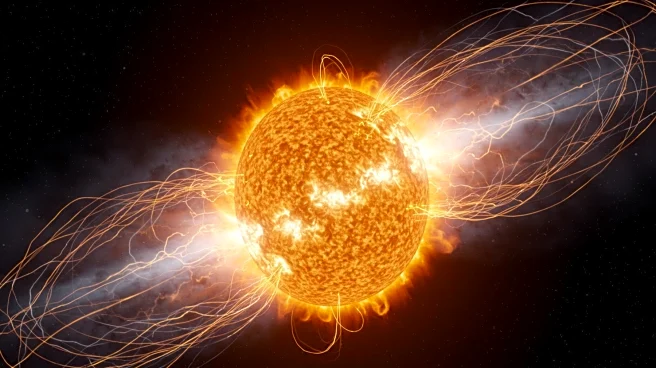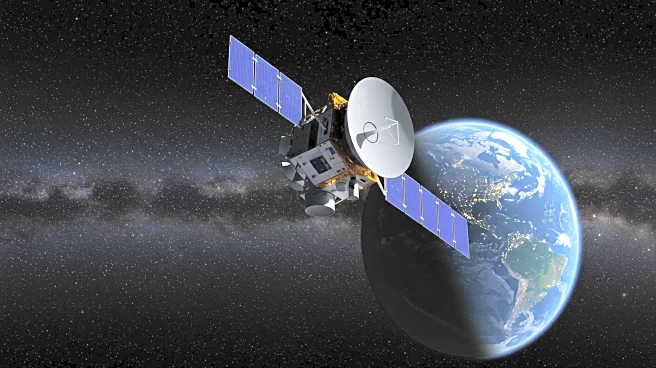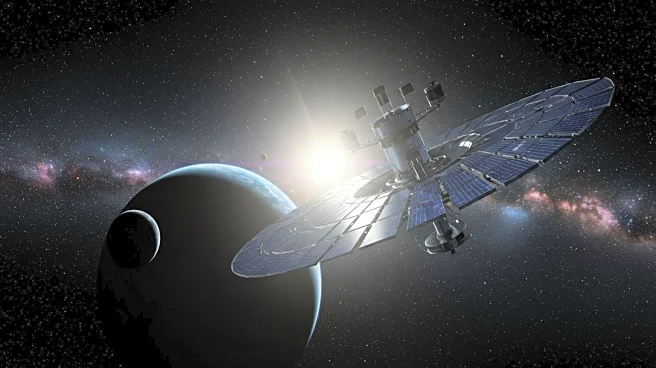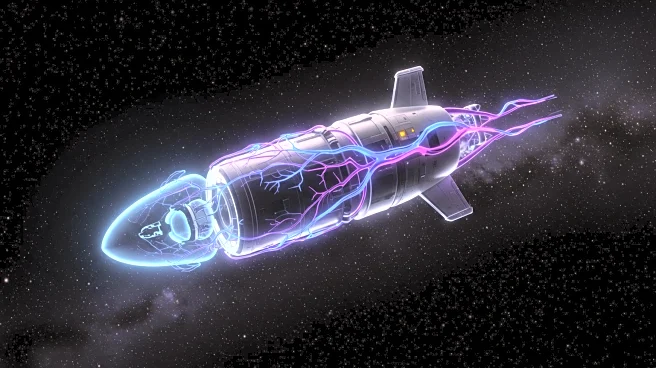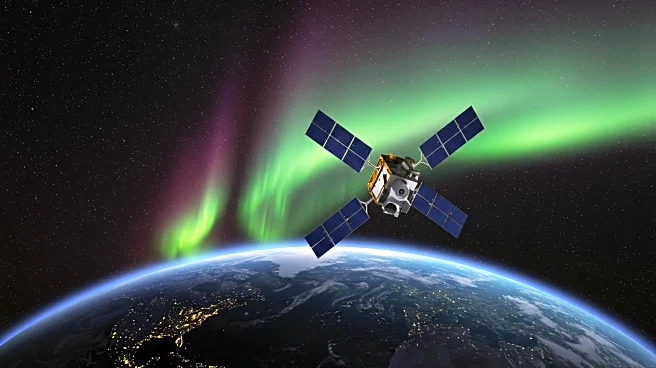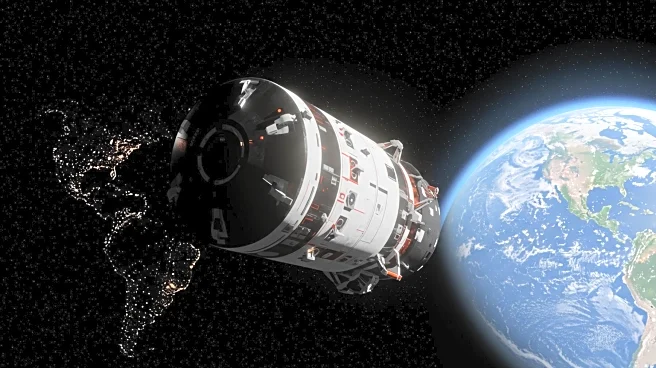What's Happening?
NASA has released a simulated visualization of the Carrington Class Coronal Mass Ejection, the strongest recorded geomagnetic storm. The simulation was developed using the ENLIL 3D MHD model of the heliosphere, which helps solve for momentum, energy density, plasma mass, and magnetic field parameters. This simulation provides a detailed view of the solar event, offering insights into the explosive blasts of plasma from the Sun's corona. The Carrington event-level CMEs are capable of carrying dense coronal material across the heliosphere at high speeds, and similar events have occurred recently, such as in 2012 when a series of CMEs hit the STEREO-A observatory platform.
Why It's Important?
Understanding and simulating geomagnetic storms like the Carrington event is crucial for preparing for potential impacts on Earth's technology and infrastructure. These storms can disrupt satellite operations, communication systems, and power grids, posing significant risks to modern society. By studying these events, scientists can develop better predictive models and mitigation strategies to protect critical systems from solar-induced disruptions. The simulation also aids in advancing scientific knowledge about solar activity and its effects on space weather.
What's Next?
The simulation of the Carrington event provides a foundation for further research into solar storms and their potential impacts. Scientists may use this model to explore other historical geomagnetic events and predict future occurrences. Continued collaboration among researchers and institutions will be essential to refine models and improve forecasting capabilities. Additionally, the findings could inform policy decisions regarding infrastructure resilience and emergency preparedness in the face of solar storms.
Beyond the Headlines
The ethical and cultural implications of preparing for solar storms involve balancing technological advancement with the need for robust protective measures. As society becomes increasingly reliant on technology, understanding and mitigating the risks posed by geomagnetic events becomes more critical. This research highlights the importance of interdisciplinary collaboration in addressing complex challenges posed by natural phenomena.
